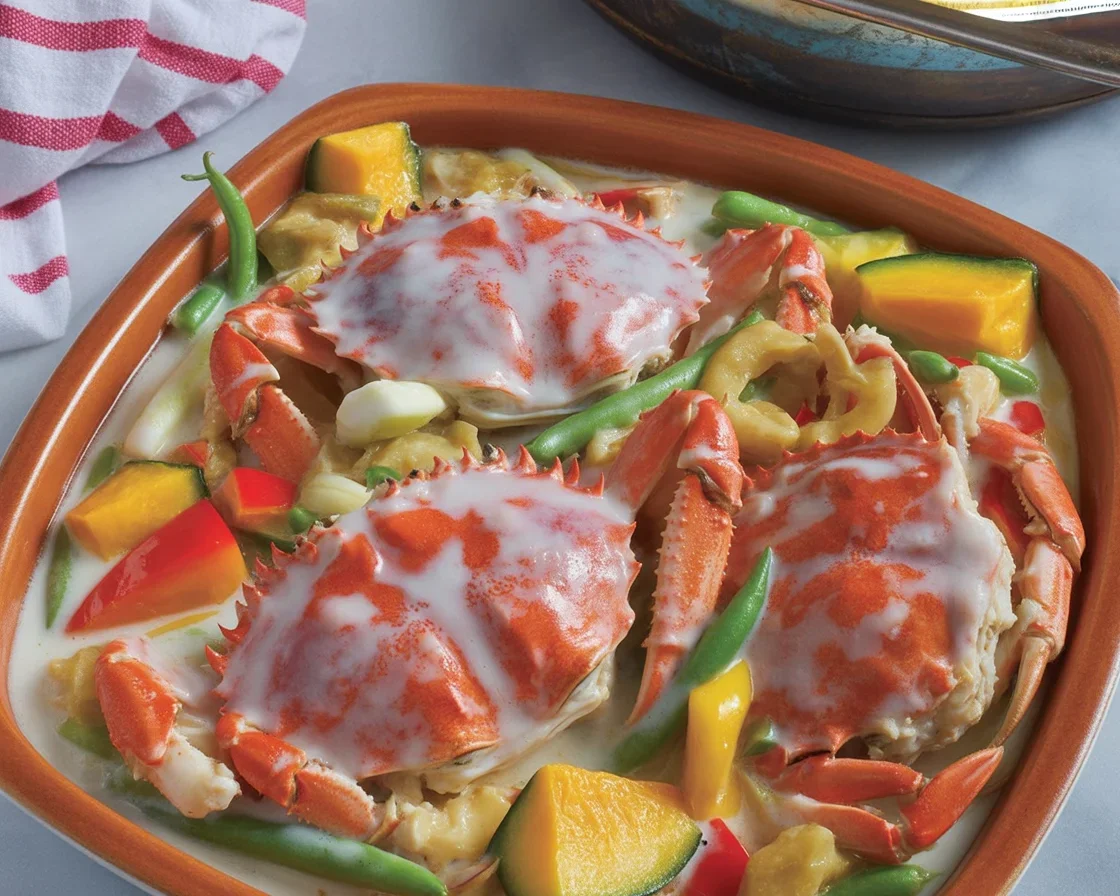- Overview of ginataang alimango
- Cleaning crab
- Cooking in coconut milk
- Adding vegetables
- Seasoning
- Serving suggestions
- Special occasion dish
Ever get hit by that wild craving for Filipino ginataang alimango but all the fancy seafood joints feel like highway robbery? Yep, that’s me every few months. Good news, though: you can totally whip up this crab in coconut milk magic at home. It’s way less scary than it looks, promise. And honestly, nothing beats that sweet-spicy, coconutty sauce you end up slurping right from the bowl (not that I’d admit that to my family). If you’re a fan of comforting Filipino classics like adobo, you’ll get that same homey vibe here. By the way, this dish makes an awesome pairing with garlic sinangag or you can check out these healthy Filipino recipes if you’re in the mood to balance things out.
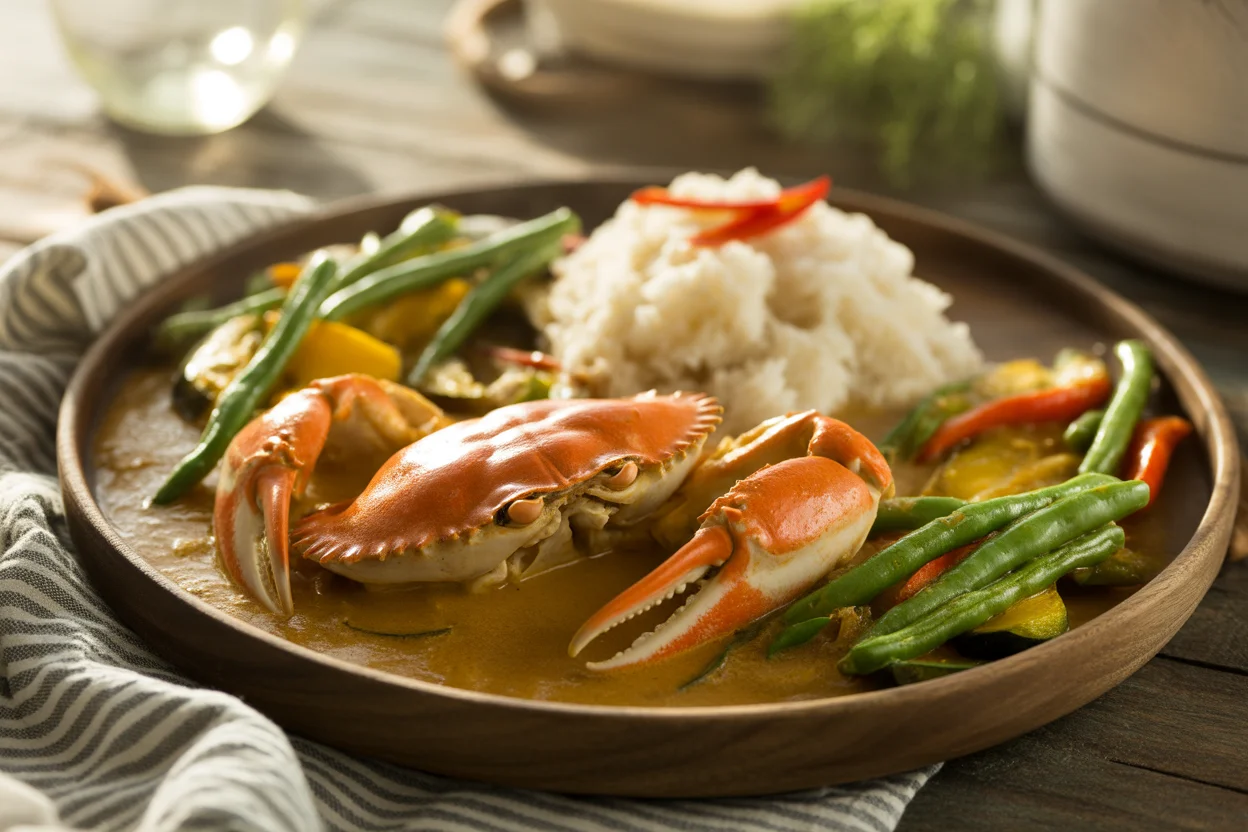
Overview of ginataang alimango
Let’s get one thing straight: ginataang alimango is not just “crab stew.” Oh boy, no. It’s basically a hug from grandma, but with claws. The main idea here is crab swimming (well, not literally, but you get it) in thick coconut milk with a bit of a spicy kick, thanks to ginger and chili. And vegetables—sometimes, but not always. For real, if you spot this dish on a fiesta table or at a big family get-together, it always disappears first. I’m not exaggerating.
This Filipino ginataang alimango recipe isn’t fussy, which is lucky for people like me who lose patience when hungry. Why is it so special? Because that mix of fresh crab and creamy coconut sauce is unbeatable. Every bite tastes rich, sweet, savory, and, if you toss in some chili, kind of feisty. Don’t have coconut trees right outside? No worries—canned coconut milk works just fine here. Family favorites don’t have to be complicated.
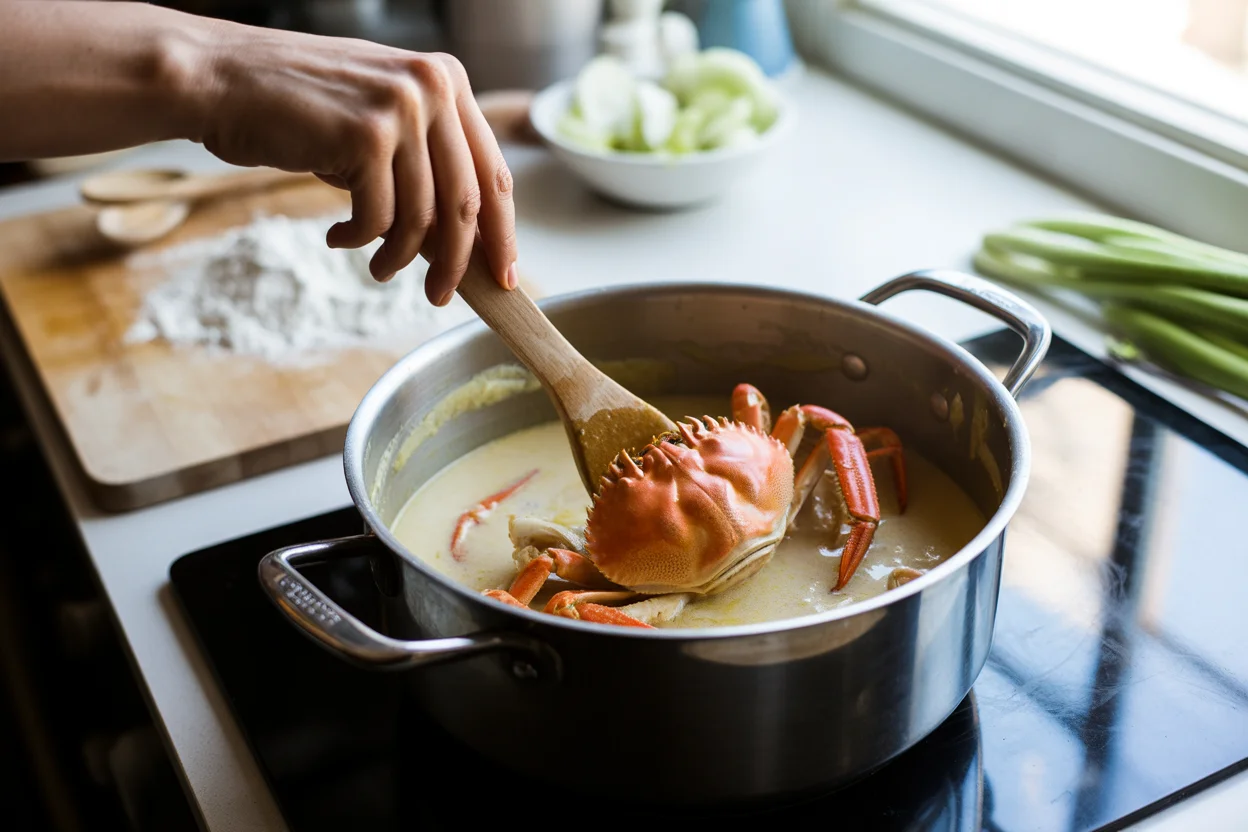
Cleaning crab
Okay, this is the part everyone dreads. But hear me out—it’s way easier than chasing crabs on the beach (I’ve tried, don’t ask). If you’re grabbing crabs from the market, ask the vendor if they’ll clean ’em for you. Some do it with a big smile. If not, rinse the crabs under cold water, dislodge the shell (pull it off carefully, don’t splash yourself like I do), then remove the gills and the icky yellow stuff if it grosses you out. Some folks keep the fat for extra flavor and a bit of drama at the table, but up to you. Oh, and snap the claws so the flavors soak in. Wear an apron—things might get splashy.
A lot of folks get turned off right at this step and skip the whole dish. But honestly? Once you’ve done it once, you’ll feel like a pro. Tidbit: my ate (older sister) always says clean crabs cook better and taste sweeter. I totally agree.
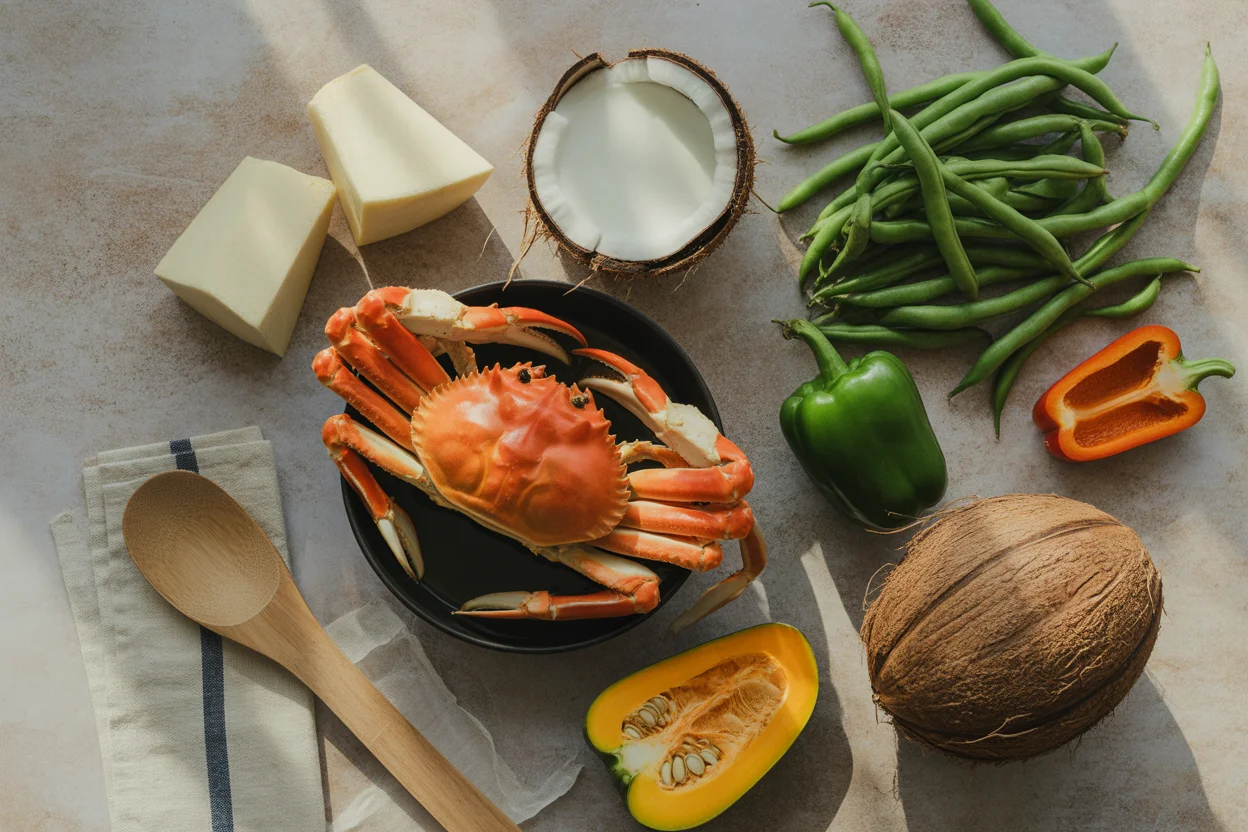
“I tried cleaning crab the first time for this recipe, and even though I was nervous, it was so worth it! The crab tasted fresher, and the dish felt extra special.” – Gina E.
Cooking in coconut milk
Here’s where the magic begins. Start by sautéing garlic, ginger, and onions in a wide pan—don’t be shy with the ginger, it makes all the difference. No need to chop things daintily, just slice ’em up and toss in. Add your cleaned crabs and pour in the coconut milk. Use enough milk so the crabs are cozied up in the sauce. Simmer on medium heat, let the crabs turn bright orange (about ten to fifteen minutes). If you’re worried about the sauce curdling, stir gently now and then, but don’t overthink it. Canned coconut milk gets thick and luscious after a few minutes—almost like magic.
Some days, the aroma alone makes me hover over the pot with a spoon. Honestly, patience is tough here. Wait until the crabs are cooked through before you start fishing out extras from the sauce.
Adding vegetables
This part is highly personal—like, every family gives you a different answer. Most classic ginataang alimango blends in veggies like long beans (sitaw), squash, or even eggplant. I love tossing in sweet potato tops or malunggay if I can snag them at the market, but use what you have. Chop the veggies into bite-sized chunks, and add them halfway through cooking so they soak up flavor without getting mushy.
Here’s the deal: don’t overload it. The crab should still be the star. Sometimes, I forget this and it becomes a vegetable stew that happens to have crab in it. Not quite as satisfying. Start with just one or two types, then see what you like. My cousin swears by adding chili leaves; I say don’t knock it till you’ve tried it.
Seasoning
Oh man, seasoning is everything, right? Salt and pepper go in near the end, but don’t forget the little extras. Fish sauce (patis) is my secret—gives the sauce a funky depth people can’t put their finger on, in the best way possible. If you like it spicy, throw in some sliced chili. If not, just leave ’em out. Taste as you cook, and tweak till it’s just right; everyone argues about the “proper” amount of salt, but you know your tastebuds best.
A little sugar balances the coconut milk’s richness. Sometimes, though, I skip it if the crabs are especially sweet. Some days you really have to trust your gut. You’ll know when it’s perfect—your kitchen will smell basically like a fiesta.
Serving suggestions
If you ask me, there’s only one real way to eat ginataang alimango:
- With a big bowl of steaming garlic rice (seriously, don’t skip this)
- A side of dipping sauce (try vinegar and crushed garlic—it’ll change your life)
- Wet wipes or lots of napkins (trust me, this dish is gloriously messy)
- A pitcher of cold water because coconut-rich dishes are heavy, in a good way
If you want to pair this with something, check out this beef caldereta or a kid-approved classic from these Filipino recipes for kids. You’ll thank me later.
Special occasion dish
So, why’s ginataang alimango considered an “occasion” dish? Simple: crab isn’t something you eat every day (unless, I don’t know, you live by the sea and own a crab pen). This recipe pops up on birthdays, reunions, or those random Sundays when your dad comes home with a messy bag of fresh crabs and a grin. Cooking it feels like celebrating something, even if it’s just surviving a long week.
It also brings people together. Everybody rolls up their sleeves, digs in, and laughs about who makes the biggest mess. In my family, it’s always a race for the biggest claw. Thing is, this dish makes any meal feel like a party—and tastes a little like home, wherever that is.
Common Questions
Should I use fresh or canned coconut milk?
Fresh is awesome, but canned is totally fine—almost every home cook does it for convenience!
How do I eat ginataang alimango without making a mess?
You… don’t. Dig in with your hands. Embrace it. That’s part of the fun.
What if I can’t find Filipino long beans?
Go with green beans, or just skip them. Don’t sweat the small stuff.
Can this be made ahead of time?
Sort of. The sauce gets tastier but crabs are best fresh and piping hot.
How spicy should it be?
Totally up to you. My mom likes to throw in extra chili for “character.” I’ve learned my lesson (once had to chug a liter of water).
Let the Crab Party Begin!
So, if you’ve ever wanted a taste of home or something more than your usual weeknight stew, Filipino ginataang alimango absolutely deserves to be your next kitchen adventure. The cleaning, the sauce, the crazy good flavor—it’s all worth rolling up your sleeves for. If you crave more like this, recipes such as Ginataang Alimasag – Kawaling Pinoy, this Ginataang Manok Recipe, or tips for Crab Cooked in Coconut Milk (Ginataang Alimango with Sitaw) will get you even deeper into coconut-infused wonders. Now all that’s left? Grab your crabs and get cooking—you’re about to make dinner feel like a five-star celebration.
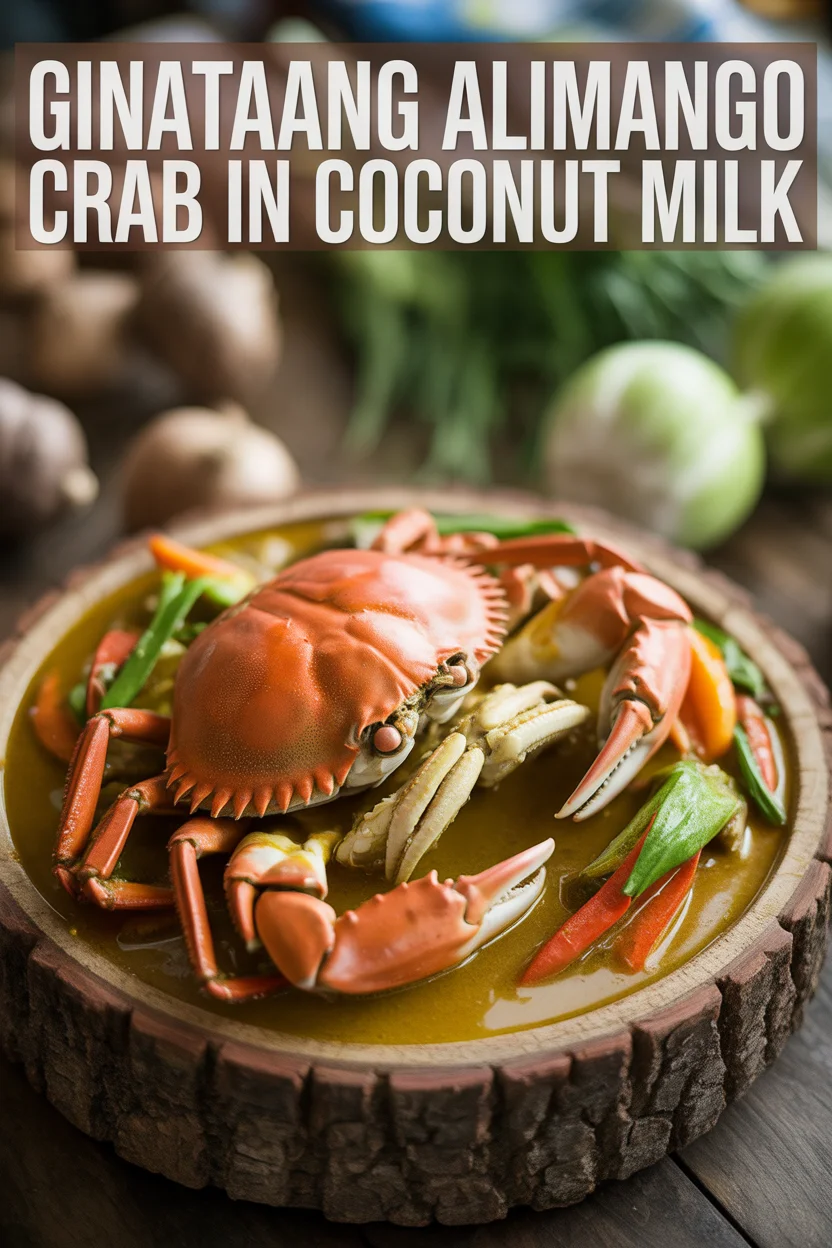
Ginataang Alimango
Ingredients
Main ingredients
- 4 pieces fresh crabs, cleaned Ask the vendor to clean them or do it yourself.
- 1 can coconut milk Canned coconut milk works well.
- 4 cloves garlic, minced
- 1 piece onion, chopped
- 2 tablespoons fish sauce (patis) Adds depth to the flavor.
- ½ teaspoon sugar Optional, for balancing the coconut milk.
- to taste salt and pepper Season according to preference.
- 1-2 pieces fresh chili, sliced Adjust according to spice preference.
Vegetables (optional)
- 1 cup long beans (sitaw) or green beans, cut Use vegetables of choice.
- 1 cup squash or eggplant, chopped
- 1 cup sweet potato tops or malunggay Optional additions.
Instructions
Preparation
- Clean the crabs by rinsing them under cold water and removing the shell and gills.
- Snap the claws to allow flavors to soak in.
- Chop the vegetables into bite-sized pieces.
Cooking
- In a wide pan, sauté garlic, ginger, and onions until aromatic.
- Add cleaned crabs to the pan and pour in the coconut milk.
- Simmer on medium heat for about 10-15 minutes or until the crabs turn bright orange.
- Add vegetables halfway through cooking to prevent them from getting mushy.
- Season with fish sauce, salt, pepper, and sugar to taste.
- If desired, add sliced chili for extra heat.
